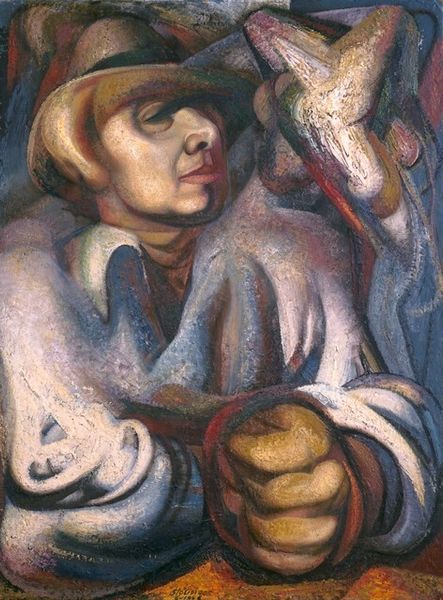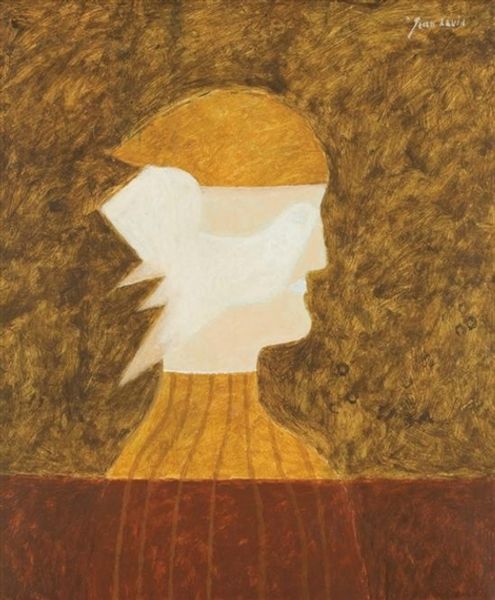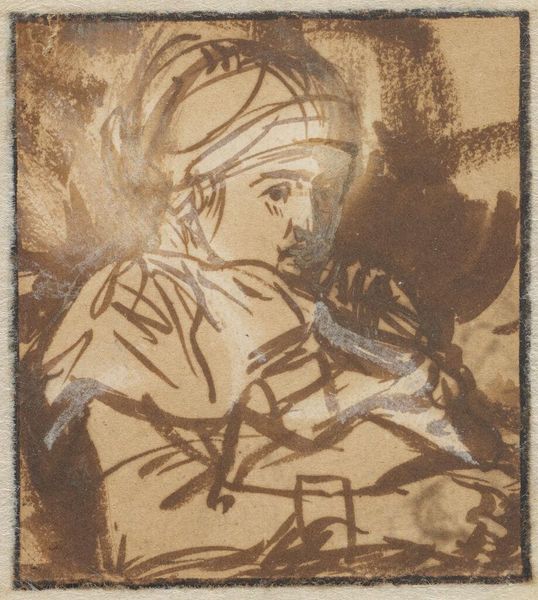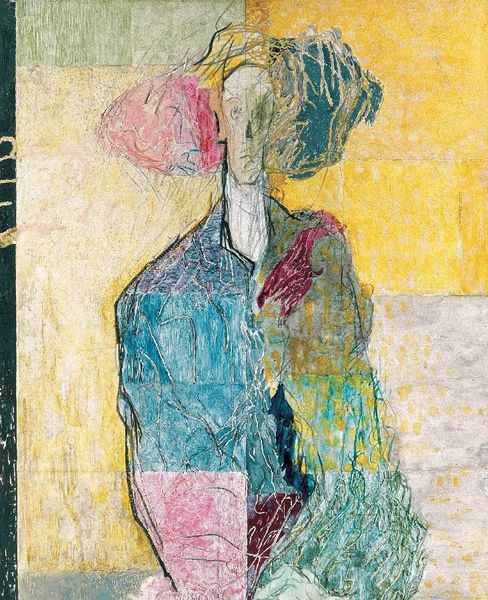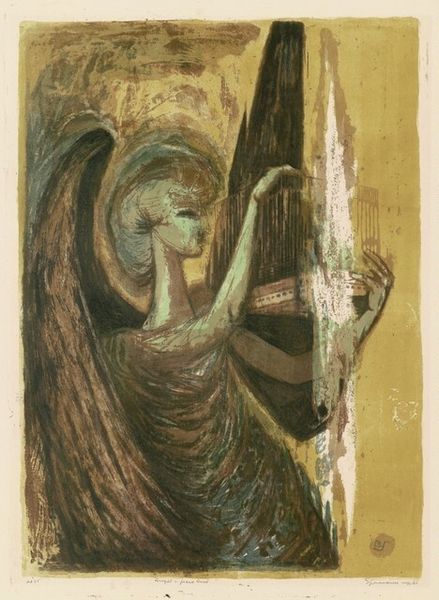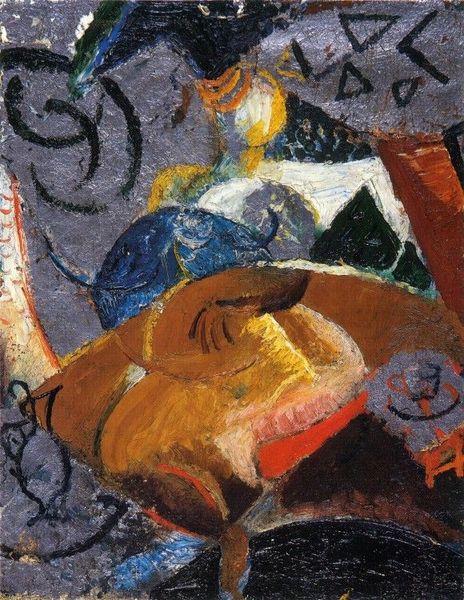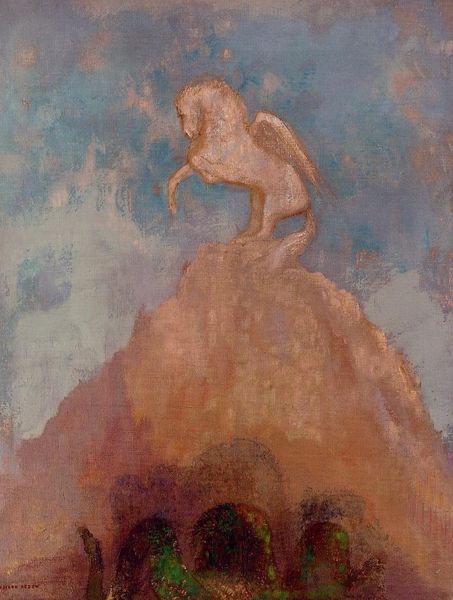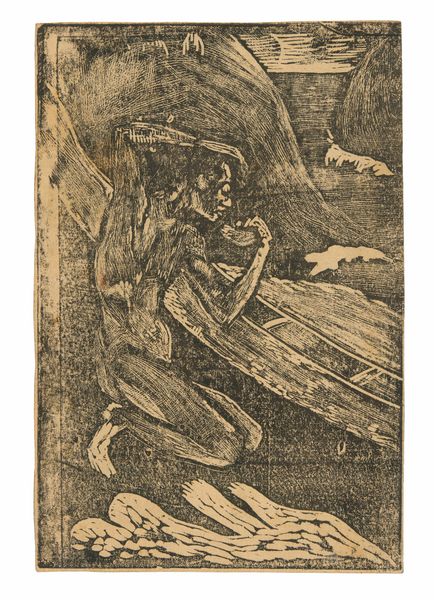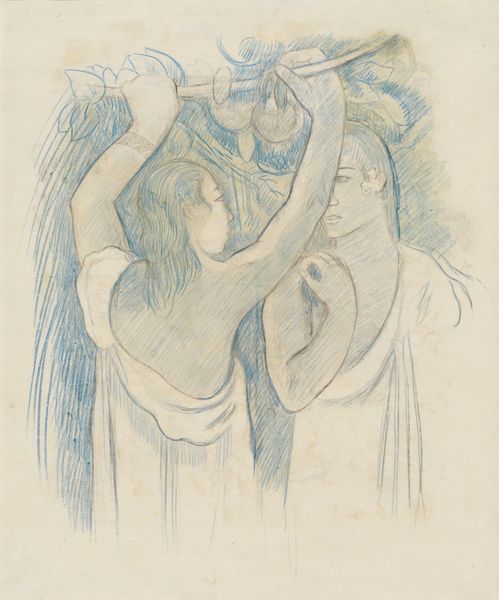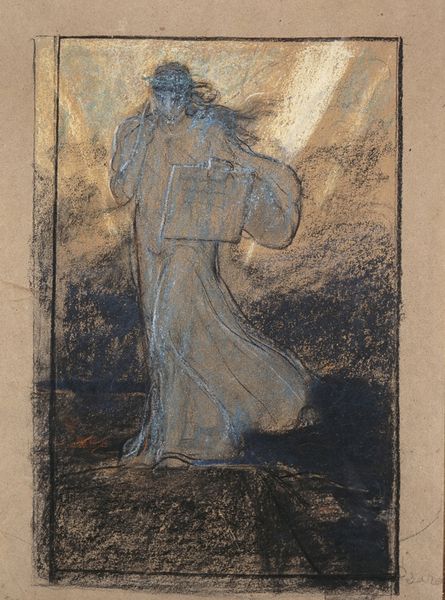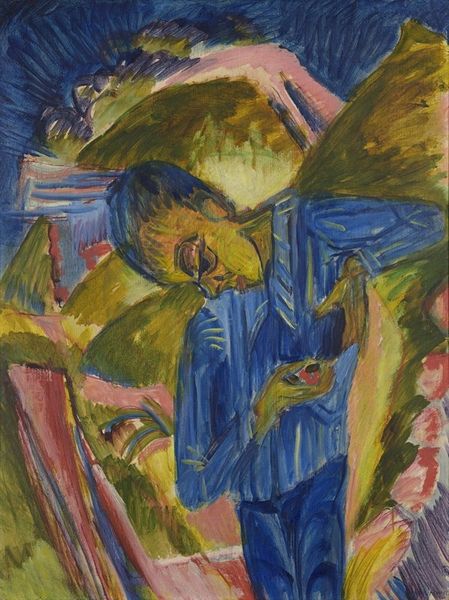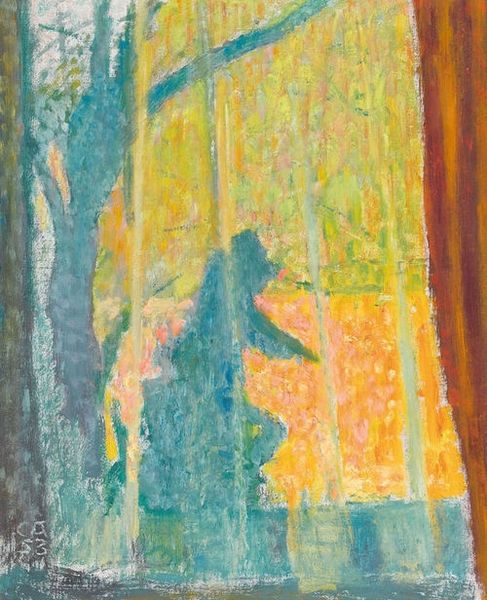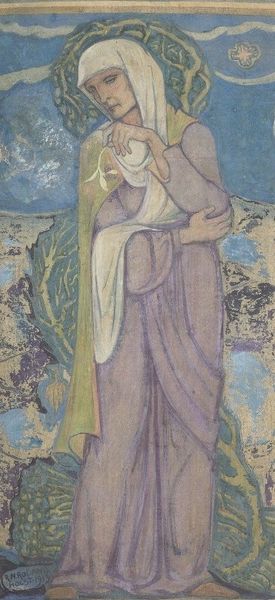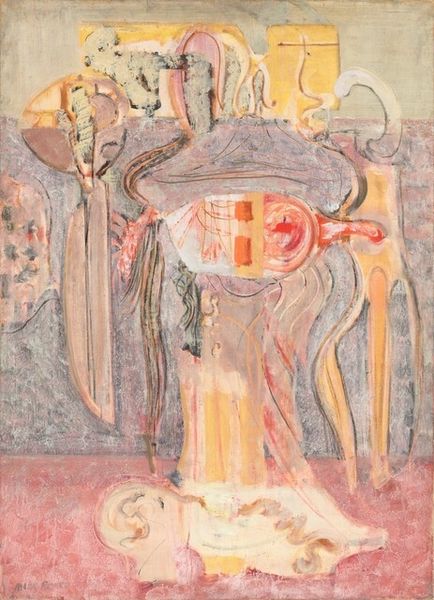
print, oil-paint
#
portrait
# print
#
oil-paint
#
figuration
#
oil painting
#
genre-painting
#
modernism
Copyright: National Gallery of Art: CC0 1.0
Curator: This is Stella Drabkin’s "Conductor", an oil painting and print created between 1948 and 1949. The mood seems focused, almost intense, and I'm curious about your take on this composition. What strikes you most about how it's made? Editor: I'm intrigued by the blend of what appear to be both painting and printmaking techniques. It makes me wonder about her process. Could you tell me more about how this piece reflects artistic production of the time? Curator: Absolutely. This mixing of media is quite telling. Post-war art often saw artists pushing against traditional hierarchies of artmaking. Oil paint was still considered a fine art medium, but combining it with printmaking, often associated with mass production, suggests a questioning of those established boundaries. Drabkin might be commenting on the democratisation of art, or perhaps exploring new modes of visual expression reflecting the evolving cultural landscape and new opportunities after the war for a greater number of people. Does that shift your understanding of the piece? Editor: Yes, it does. So, by using printmaking, which can create multiples, and combining it with the unique materiality of oil paint, Drabkin is perhaps engaging with the idea of reproducibility versus the "aura" of the unique artwork. How does the choice of subject matter – a conductor – fit into this discussion of labor and production? Curator: Excellent question. Consider the conductor as a kind of 'factory manager' of musical production, coordinating diverse instrumental 'workers' to create a harmonious whole. Drabkin may be commenting on the social dynamics within orchestras, the division of labor, or even the conductor’s role in shaping cultural output, making it almost like an industry itself. Does considering this angle deepen your appreciation of the piece? Editor: Definitely. I hadn't thought about the conductor as a manager before, that's a whole other dimension. Thinking about her choice of materials, plus that angle on cultural production, really adds to the richness of the piece. Curator: Indeed, analyzing the artwork in terms of its materials and production opens up interpretations beyond simply aesthetic appeal, inviting conversations about societal shifts, labor, and the very definition of art.
Comments
No comments
Be the first to comment and join the conversation on the ultimate creative platform.
